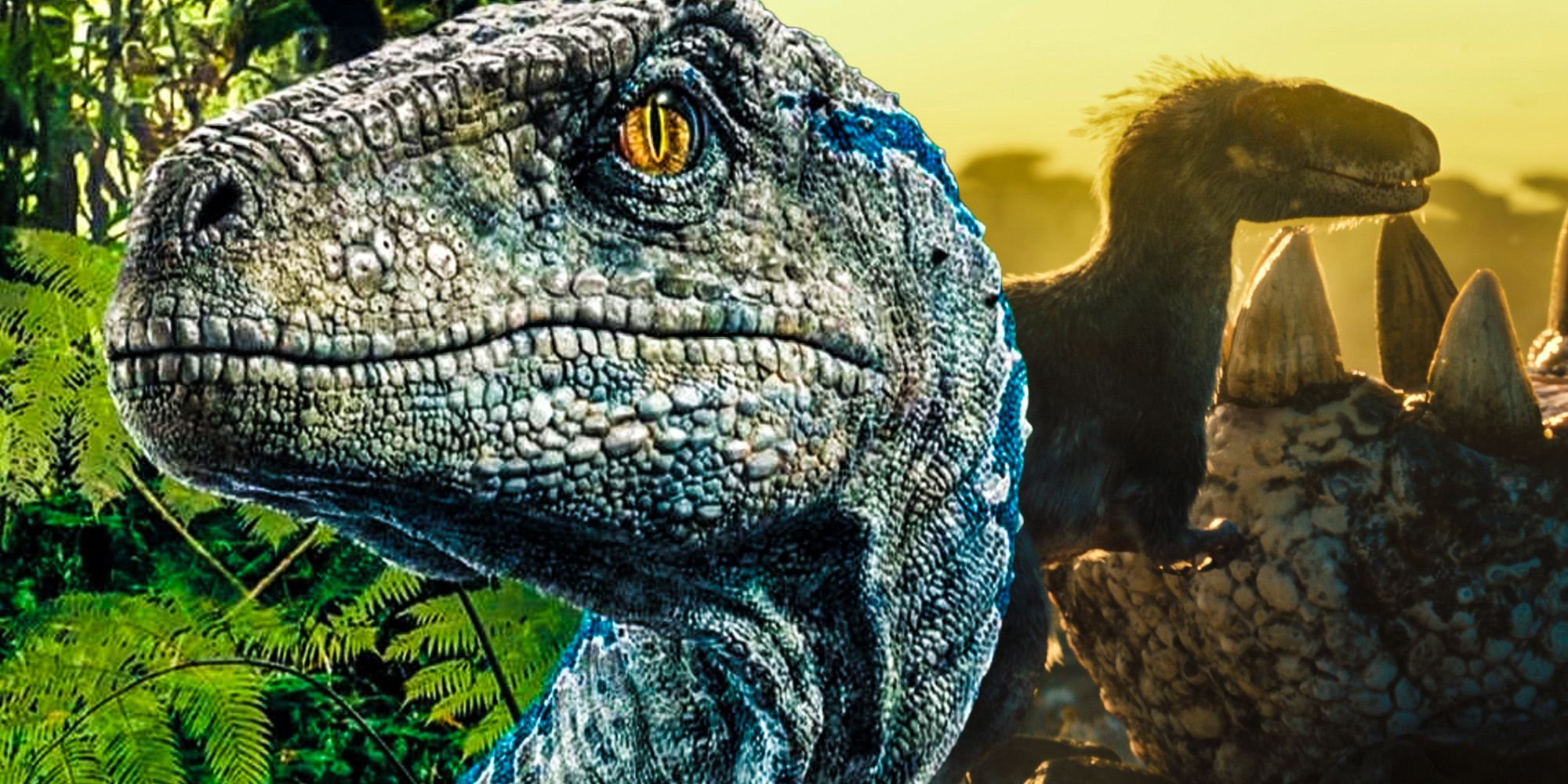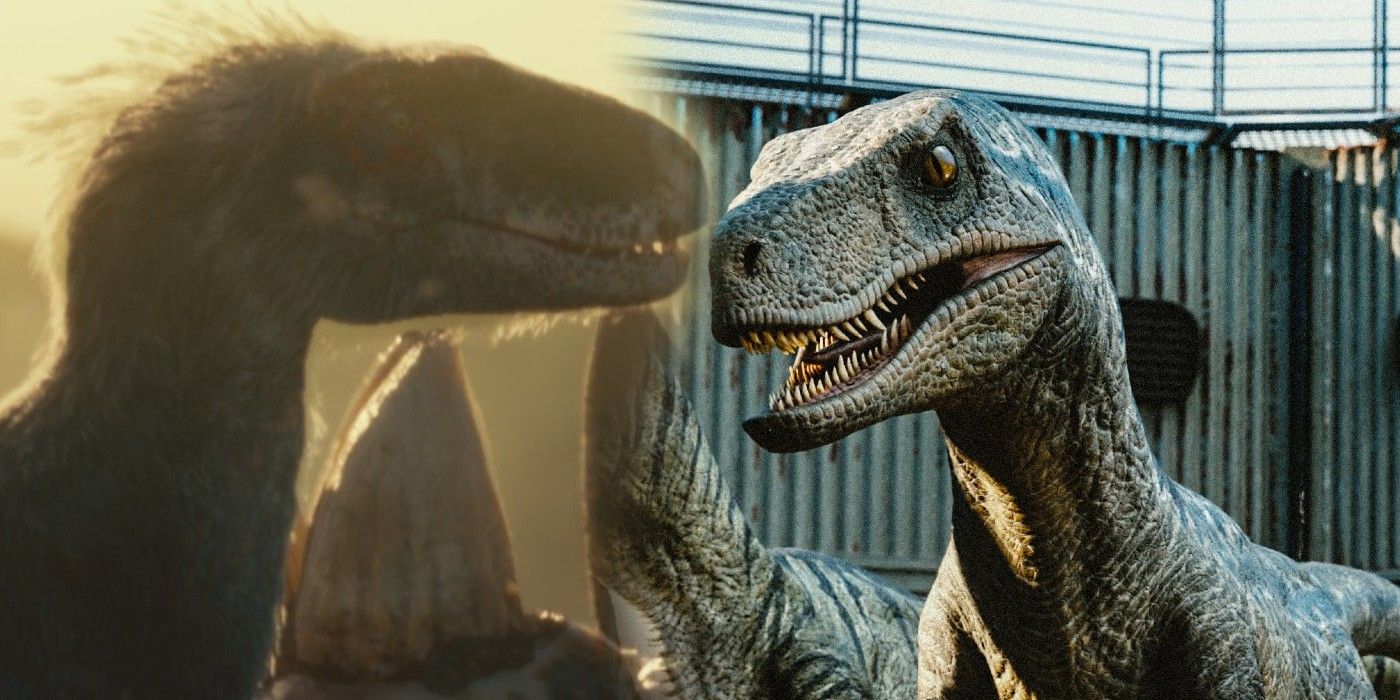
The Jurassic Park franchise has always struggled with the idea that evolutionarily speaking, dinosaurs were essentially giant birds - despite both the original and now Jurassic World: Dominion addressing this. Since beginning in 1993, the Jurassic Park and subsequent Jurassic World movies have fallen in and out of favor with critics, with the first movie and Jurassic World receiving stellar reviews while their follow-ups earned more mixed responses. However, one thing that every installment in the franchise has in common is (mostly) ignoring a vital part of the real-life appearances of dinosaurs - until Jurassic World: Dominion's first teaser trailer, that is.
To keep the villains of the franchise awe-inspiring and terrifying instead of a little unintentionally comical, the Jurassic Park franchise has always had to play fast and loose with biology. The velociraptors and T-rex of the Jurassic Park series are not depicted with feathers in the movies, despite evidence that their real-life equivalents would have been feathered animals. Dinosaurs acted as evolutionary precedents for birds, rather than reptiles, something that the series occasionally addresses but never dwells on for any significant screen time.
Going back to Steven Spielberg’s original Jurassic Park, Dr. Grant does concede early on in the movie that the velociraptors were essentially giant turkeys, but the movie (and its sequels, and two reboot sequels) then went on to avoid this idea. The reason is pretty obvious for many fans of the franchise, as it's a monster movie series first and foremost, and a giant bloodthirsty lizard is a lot scarier than a big chicken. However, numerous other important factors play into the Jurassic Park movies depicting velociraptors and T-Rex as giant lizards rather than birds.

Like fur, feathers are tricky for CGI animators to work with. Essentially hundreds of independently moving parts, feathers are a complex visual to incorporate and would likely have been impossible for animators to realize in the '90s when Jurassic Park's CGI was already extremely expensive and cutting edge. A costly addition, feathers also ran the risk of making the monsters look less, rather than more, scary. As a massive franchise with toy tie-ins and plentiful merchandise, Jurassic Park needed its dinosaurs to be both scary and cool-looking, neither of which would have been had they been given feathers.
To be fair to the series, since Dr. Grant's first appearance Jurassic Park has not hidden the real-life origins of dinosaurs from viewers. Crichton’s writing was grounded in real-life science, meaning many of these necessary logical gaps have believable canon explanations. For example, the dinosaurs seen throughout the series are genetically engineered and brought to life by lab technicians, so it is a reasonable guess that the theme park owners demanded the scientists get rid of their feathers to make the monsters more interesting for the park attendees. This Jurassic Park theory is reinforced by the later movies, which see the amoral organizers creating new dinosaurs solely to draw in crowds despite the obvious risks.
Meanwhile, the movies have drawn the comparison in more subtle ways, too. One of Jurassic World’s best gags featured a playful visual reference to the evolutionary connection early on in its action, with a match-cut jumping from the Indominus Rex beginning to break out of its egg to a crow stamping on a patch of suburban lawn. Between this visual gag and Dr. Grant’s turkey comparison, along with Crichton’s research, it is obvious that the Jurassic Park series knows dinosaurs were feathered creatures who looked similar to birds. However, while the IMAX teaser trailer for Jurassic World: Dominion shows the first feathered dinosaur in the series, viewers can be guaranteed that the franchise will likely still struggle to take the bird-like monsters seriously. After all, even creature features as solid as the Jurassic Park movies would struggle to make a turkey threatening.
from ScreenRant - Feed https://ift.tt/3h3Y2gE


0 Comments